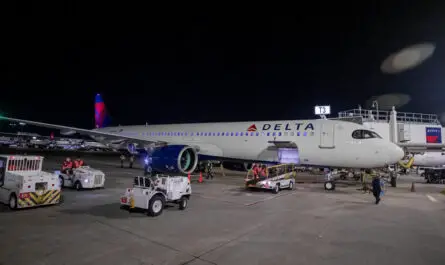Work begins on Brandon Road Project to safeguard Great Lakes from invasive carp, a critical move for ecological and economic protection.
Key Project to Prevent Invasive Carp in Great Lakes Underway
The U.S. Army Corps of Engineers (USACE) has taken a significant step in protecting the Great Lakes ecosystem by awarding the first construction contract for the Brandon Road Interbasin Project. Announced on December 4, the project is a collaborative effort between USACE and the states of Illinois and Michigan, targeting the critical prevention of invasive carp entry into the Great Lakes through the Illinois River.
Molly Flanagan, Chief Operating Officer of the Alliance for the Great Lakes, praised the swift action, saying, “The Army Corps of Engineers and the states of Illinois and Michigan clearly recognize the threat invasive carp pose to the Great Lakes.” She emphasized the importance of this initiative in halting the spread of invasive carp, which have already caused widespread ecological damage in the Mississippi and Illinois Rivers.
The Threat of Invasive Carp to the Great Lakes

Invasive carp, including species like silver and bighead carp, present an existential threat to the ecological and economic health of the Great Lakes. These species outcompete native fish for food, severely disrupting local ecosystems. Silver carp are notorious for their behavior, leaping from water when disturbed, posing safety risks to boaters and making infested waters unusable for recreational activities.
The consequences of carp invasion could be devastating for the Great Lakes region, threatening biodiversity, fishing industries, and local communities. Experts have long warned that without intervention, the Great Lakes—home to a $7 billion fishing industry—could face irreversible harm.
Brandon Road: A Critical Pinch Point in the Fight
The Brandon Road Lock and Dam was identified as a vital choke point to halt the migration of invasive carp into the Great Lakes. The site will feature layered technologies to block carp while allowing for the continued flow of water and navigation. The innovative system will include measures such as acoustic deterrents, water jets, and electric barriers to prevent carp movement while minimizing disruption to other aquatic life.
The Brandon Road project is expected to set a national precedent for combating invasive species through advanced engineering solutions. For over two decades, organizations like the Alliance for the Great Lakes have championed the project, advocating for funding, regulatory approval, and public support at both state and federal levels.
Collaboration Between States and Federal Agencies
The partnership between Illinois, Michigan, and USACE exemplifies the regional commitment to addressing this shared environmental challenge. Both states have been instrumental in funding and planning, recognizing the interconnected nature of Great Lakes preservation. The project’s funding and engineering advancements reflect a unified approach to safeguarding one of North America’s most vital natural resources.
The Alliance for the Great Lakes has played a pivotal role in the project’s progress, with advocates pushing for its realization since the early 2000s. The Alliance’s continued efforts highlight the importance of collaboration between environmental organizations, government agencies, and local stakeholders in tackling ecological crises.
A Model for Invasive Species Management
With construction underway, the Brandon Road project represents a landmark in invasive species management, blending ecological innovation with regional cooperation. The initiative sends a strong message about the importance of proactive measures to protect natural resources before irreversible damage occurs.
The project also underscores the economic necessity of preserving the Great Lakes. Beyond environmental concerns, the lakes support millions of jobs in industries ranging from fishing and tourism to transportation and manufacturing. The long-term success of the Brandon Road barrier could inspire similar initiatives nationwide, addressing other invasive species threats in vulnerable ecosystems.
Find More Interesting Feature Stories From ThumbWind
- Michigan Features: Unveiling the people, places, and events that make the Great Lake State unique, we’ll explore hidden gems and must-do activities.
- Weird Political News: A sarcastic and insightful take on official news released by government sources, PACs, and public officials.
- Michigan News: News and events of Michigan’s Upper Thumb that are worth knowing in the region.
Your Turn – Like This, or Hate it – We Want To Hear From You
Please offer an insightful and thoughtful comment. Idiotic, profane, or threatening comments are removed. Consider sharing this story. Follow us to have other feature stories fill up your Newsbreak feed from ThumbWind Publications.



